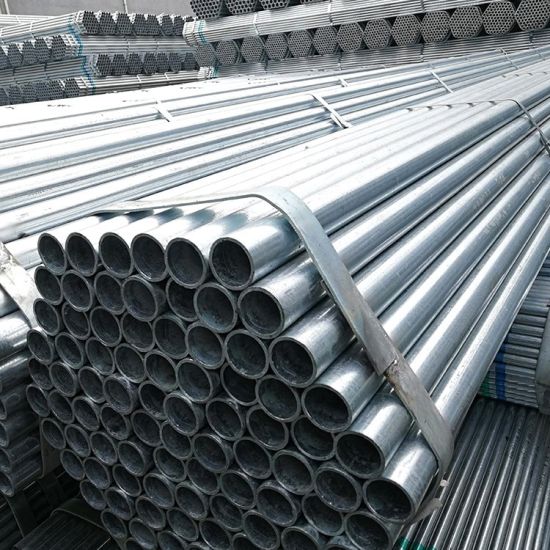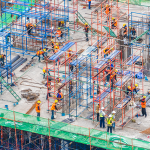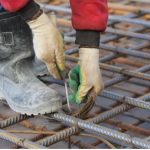Modular scaffolding systems are essential in the current construction industry, as they underpin the sector’s efficiency and safety standards. These systems feature adaptable and precise designs that ensure all types of construction work and building shapes receive the necessary structural support from one work stage to another. Modular scaffolding must be used in construction works to ensure workers’ safety as well as promote operational efficiency and cost-effectiveness of the same in any way possible. The systems, which typically feature prefabricated components that lock into one piece after another, are easy to assemble and dismantle. This quality makes modular scaffoldings ideal for any work that may need fast interventions to sort out time-sensitive projects. Additionally, already-built construction design shapes and measurements continue to evolve in standard and distinct ways, ensuring the perpetuation of the place and use of these scaffold systems. Therefore, modular building scaffolding systems play a significant role in the construction industry and have d scaffolding rental riven the way other building technologies and approaches are developed to the current stage.
Exploring Types of Modular Scaffolding
Based on the abovementioned feature and use, modular scaffolding can be conventionally divided into three types, all ensuring the requirements for particular projects. The first one is a frame scaffolding, which includes prefabricated frames, and cross braces and enables a rapid setup for many construction sites due to its ease of assembly. Another type is system scaffolding, which has interlocking components and provides the highest load capacity and versatility, which is appropriate for complicated constructions. Tube and clamp scaffolding shows the biggest flexibility due to individual tubes and clamps that can be adjusted in different configurations, including irregular geometries and custom constructions.
Benefits of Modular Scaffolding
The benefits of applying modular scaffolding systems in construction outweigh the possible disadvantages. Most importantly, this system is designed with safety in mind and includes slip-resistant platforms and built-in guard rails that contribute to workplace injury reduction. In addition to this, the high speed of assembly or disassembly is crucial for projects with tight timelines. Components of such scaffolds are prefabricated, and they are simply locked into place, which contributes to time reduction significantly. Another advantage of modular scaffolding is its high level of adaptability. Most of the scaffolding components can be reutilized and reconfigured to particular building shapes and sizes, which is also essential for unique construction projects. Lastly, the cost-effectiveness of these systems is high as one set of scaffolding components can be used during various stages of construction to reduce the excessive installation of such systems.
Key Components of Modular Scaffolding Systems
A clear understanding of the key components of modular scaffolding systems might help to realize their intrinsic flexibility and the range of operations they support. The foundation sections include the following elements: standards, ledgers, and transoms. Standards are vertical tubes transferring the weight of the entire structure directly onto the ground. Ledgers represent bars laid horizontally that link the standards and serve to support numerous platforms. Placed perpendicularly to the ledgers, transoms support the platforms and help distribute the load evenly. One more crucial element is the base jacks, which ensure stable positionality and enable adjustment of height to level the structure regardless of ground irregularities. Guard rails are essential for preventing falling off the platform at height. The platforms allowing mobility on and access to the totality of levels typically feature nonslippery surfaces and sturdiness guaranteeing the weight of the worker and the tools.
Applications in Construction
Modular scaffolding is considered versatile and finds many applications for these reasons. One such application is the construction of high-rise buildings, where these systems scale quickly, allowing for the creation of stable work platforms on high floors. In addition, other infrastructure works, including building bridges and tunnels, require scaling scaffolding that can work in unique configurations and under heavy loads, and modular scaffolds perform these functions as well. Still, other areas that require temporary solutions, such as events, benefit from the use of modular scaffolds that are easy to assemble and disassemble, yet provide reliable and convenient workspaces.
Installation Techniques
Properly assembling the modular scaffolding is a meticulous and precise process that requires comprehensive planning. It starts with a thorough assessment of the particular construction site to ensure the scaffold design meets the unique needs of the construction. This step is critical for determining the scaffolding materials and assembling them in a position that offers maximum safety and stability. After planning, the scaffolding is assembled as follows: the base jacks are set first to ensure the platform is level and sound regardless of irregularities in the ground. The standards are put up followed by the ledgers, then the transoms, which are locked into place. Safety checks are conducted throughout the process to ensure each component is well-placed and secure.
Additionally, safety protocols must be rigorously followed to protect workers from potential hazards. This includes fitting guard rails at all open sides and ensuring that all platforms are stable and free from obstructions. Compliance with local safety regulations is not just mandatory but essential for the smooth execution of construction tasks.
Maintenance and Management
Maintenance of a modular scaffolding system is as critical as its installation. Regular checks should be conducted to ensure that there are no warning signs of disaster due to a weakening panel and or damaged spreaders among other problems. This exercise, in general, should be carried out by an experienced individual during which any discovered vulnerability is handled instantly. For any part of a component found to be defective or worn out, a replacement should be sought immediately to ensure the scaffold’s integrity as the shape is preserved. Furthermore, it is often a good practice to ensure the equipment is stored in a safe location when not in use where it is protected from environmental damage to keep it in a state ideal for the next assignment. Other forms of efficiently managing a scaffolding resource include proper record-keeping and handling of the inventory. These measures help make the reassembly process effortless and straightforward and the equipment is regularly audited for compliance.
Conclusion
In conclusion, modular scaffolding systems remain a particularly important tool in the construction industry. Their adaptability, safety, and affordability provide this industry with crucial benefits. It seems likely that these systems will develop further and will be even more effective and sustainable, thus completely transforming construction approaches in all the countries of the planet.







